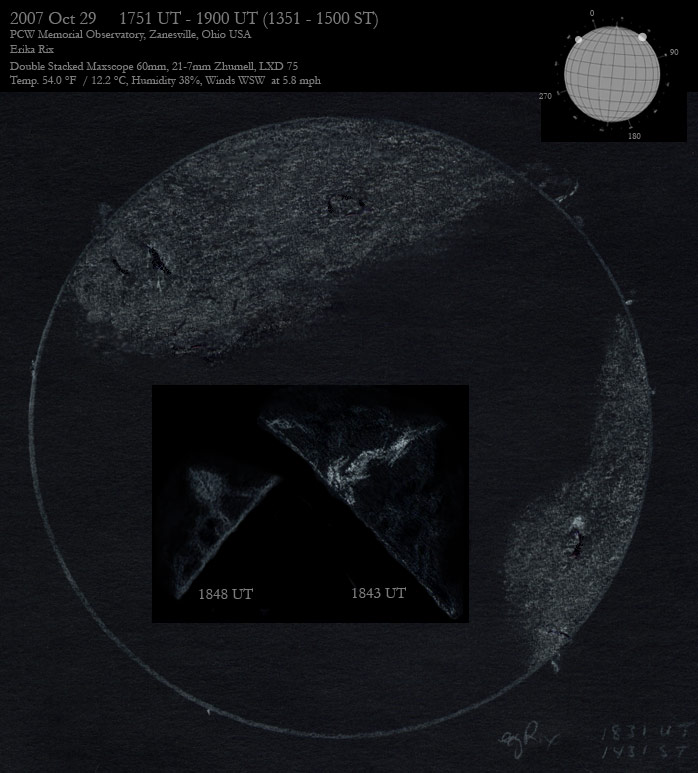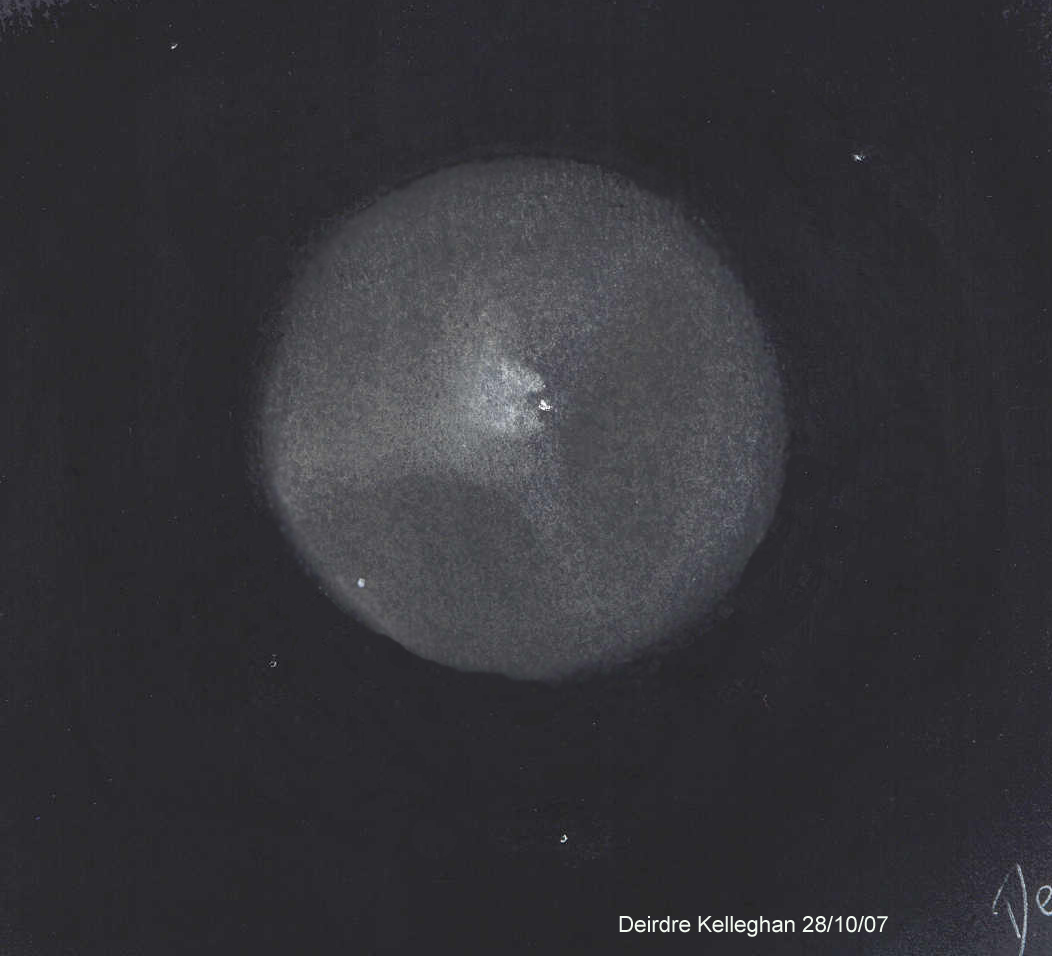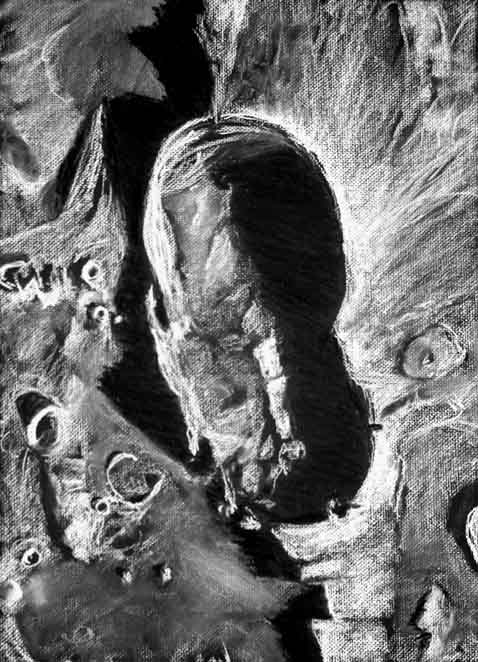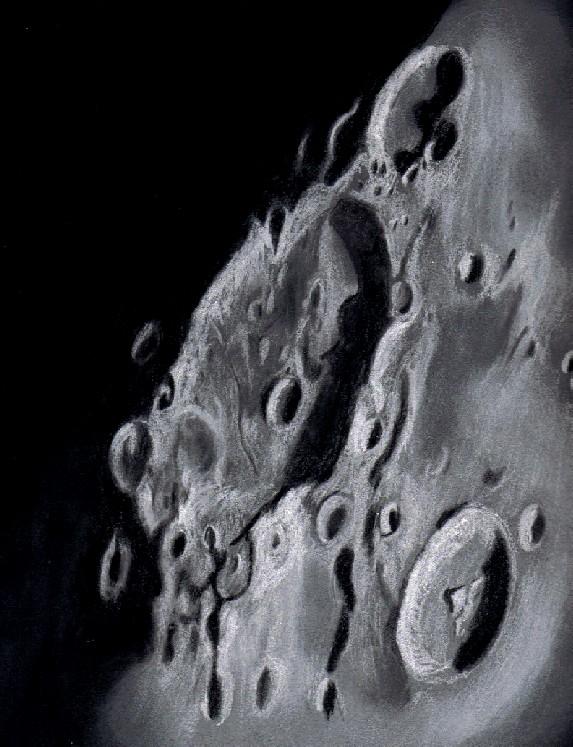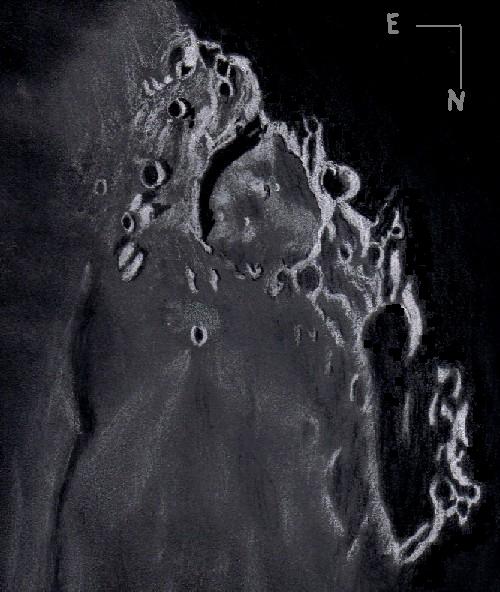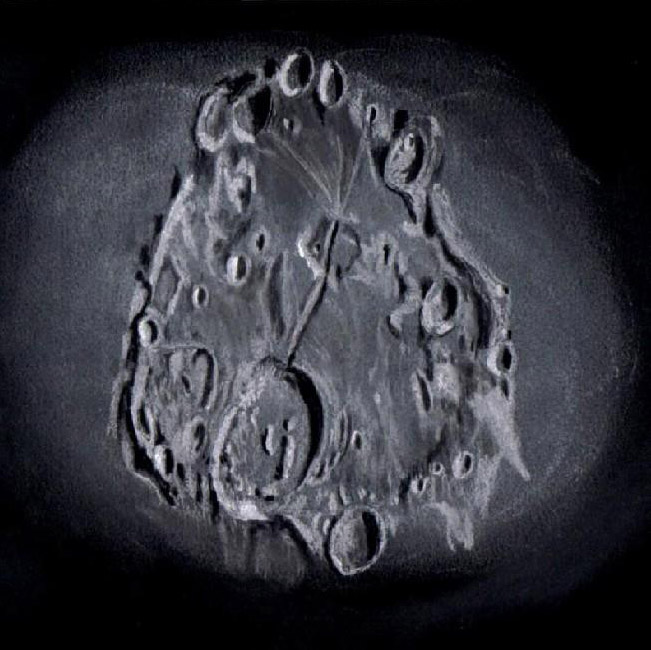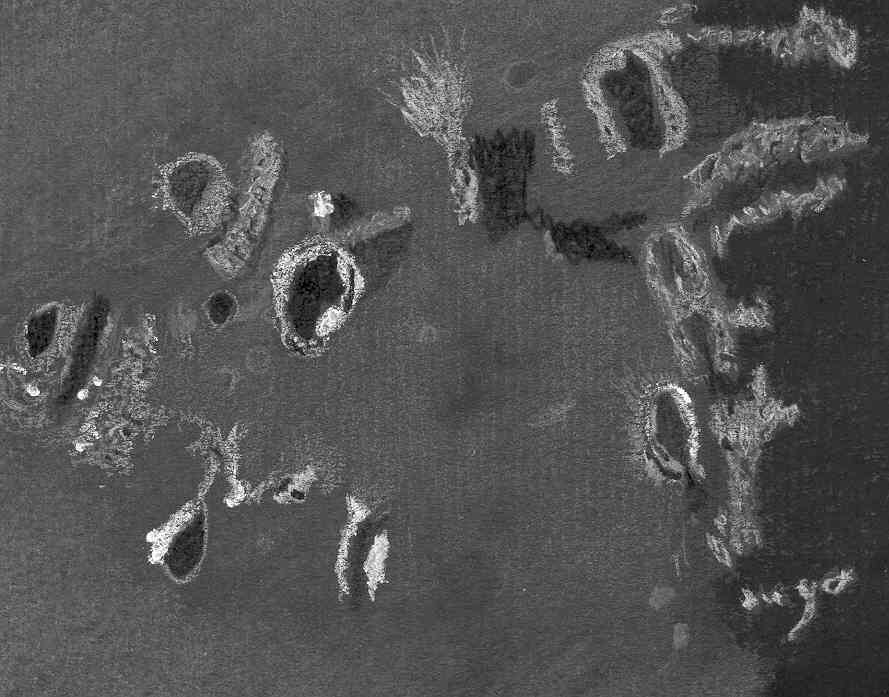Wargentin and Environs
By Richard Handy
Immediately south west of Schickard near the South West limb, lies a crater that can truly be regarded as one of the Moon’s most unusual and enigmatic features. Eighty four kilometer Nectarian aged Wargentin is a cup filled to the brim with ancient mare lavas. Its relatively smooth and flat floor has a series of gently sloped branches from it’s central wrinkle ridge, yet beyond this gentle relief it is almost flush with the crater rim, creating a plateau fully 450 meters higher than the surrounding mare. The maria like surface shows significant albedo (shades of grey tone) differences. There is a coating of light material that appears in patches and sheets most probably of Orientale origin, the last remnants of the skirt of fluidized flow fronts settling out over this region.
There are a few smaller or partial versions of this “filled to the rim” crater phenomena on the lunar surface, however nothing of this size appears anywhere else on the Moon. What special conditions must be satisfied to allow for the creation of this bizarre lunar plateau? We can be assured that the inner crater walls did not have many faults or openings that would have allowed the mare lavas to escape. A close look at the exterior wall shows that it remains relatively free of large secondaries or craterlets. This obvious lack of wall destruction certainly must have played a role in the continued embayment of the lavas over time.
An element that may have been a factor was that Wargentin appears have excavated a deep crater in pre-existing mare units. Hypothetically these denser basalt rims could more effectively embay lavas than the rims of craters in plains or highland areas because of their more compact stratification. Rim material would therefore be much more likely to hold the magma within the inner walls, as the floor slowly crept higher and higher on each new inundation.
The third element is perhaps the least well understood. How did its magma channels, cracks or fissures deep beneath the crater bowl itself, feed this unique crater? In other words what kind of plumbing was required to allow this “bathtub” of a crater to fill to overflowing? There must be a reason that the crater continued to fill up over the millions of years required to lay down such a volume of lava. Or alternately did it fill up, at least partially, in a relatively short time span of tens of thousands of years while still a young feature, perhaps after the impact penetrated into liquid magma filled channels or chambers? Nearby Schickard shows evidence that some mare lava flooding occurred after the dusting by the Orientale impact and therefore argues for a gradual buildup over many tens of millions of years.
Lunar geological research will undoubtedly uncover some of the reasons this remarkable and puzzling feature exists, yet its enigmatic and singular nature may well have to wait for a more sophisticated understanding of the early lunar crust and mantle.
Sketch details
Subject: Wargentin and environs
Date: 3-2-07 (UT) Julian date: 3-1-07
Session Start 6:32 UT End 8.00 UT
Seeing: Antoniadi II-III Weather clear
Lunation 1041, 12.51 days Phase: 20.1 deg Illumination 96.9%
Colongitude: 65.0 deg
Lib in Lat: -02 deg 19 min Lib. in Long: +4 deg 52 min
Telescope: Meade 12” SCT f/10
Meade Star diagonal
Binoviewer: W.O. Bino –P with 1.6X nosepiece
Eyepieces: 12.4 mm Meade Super Plossls
Magnification: 393X
Sketch medium: White Conte’ Crayon on black textured Strathmore paper
Sketch size: 18” x 24”



